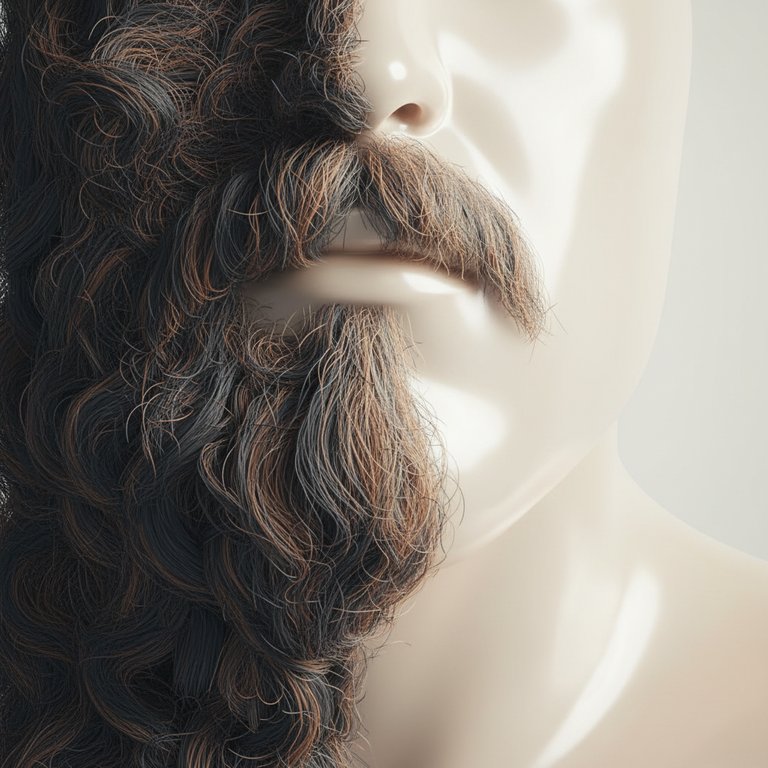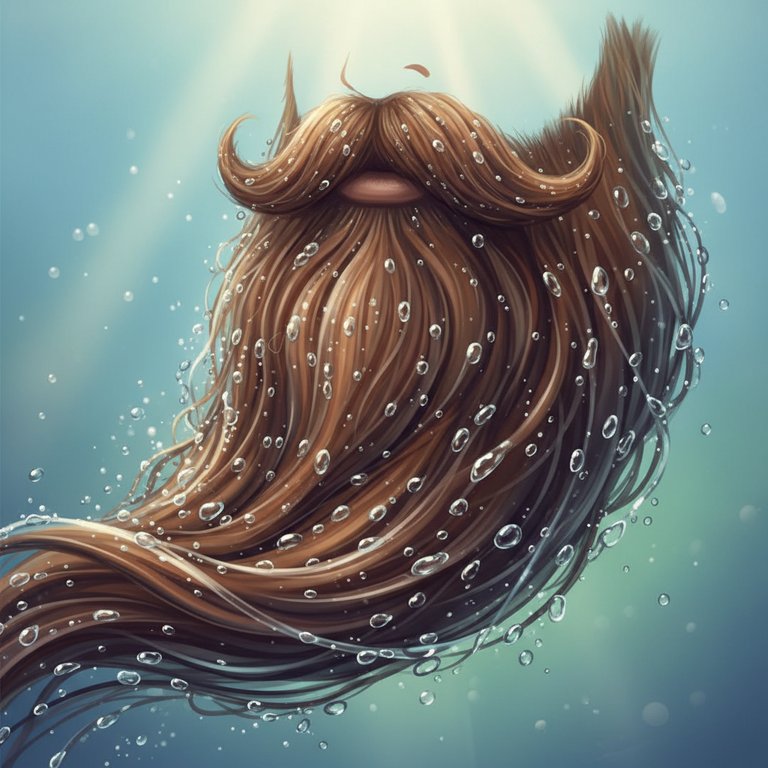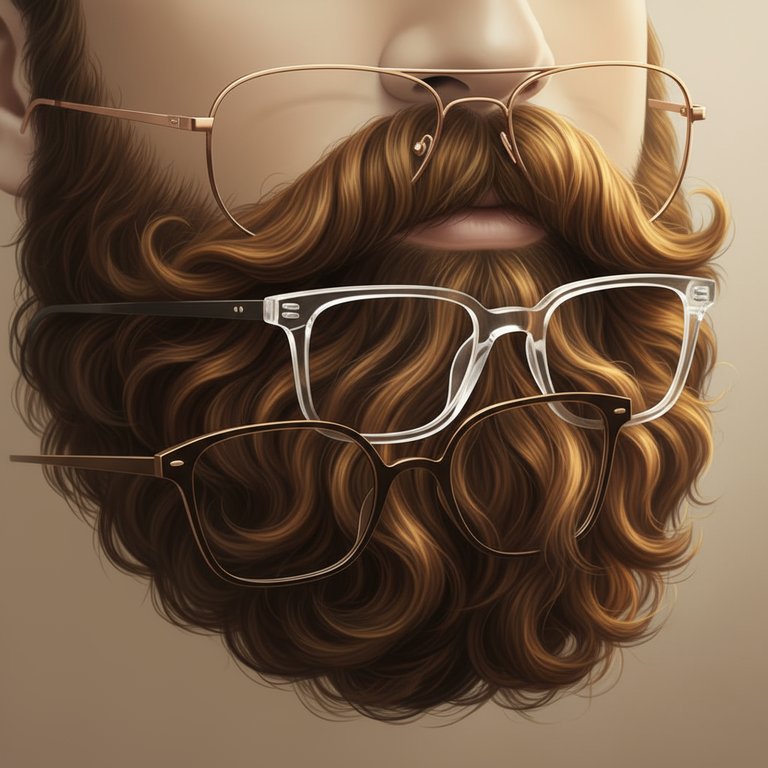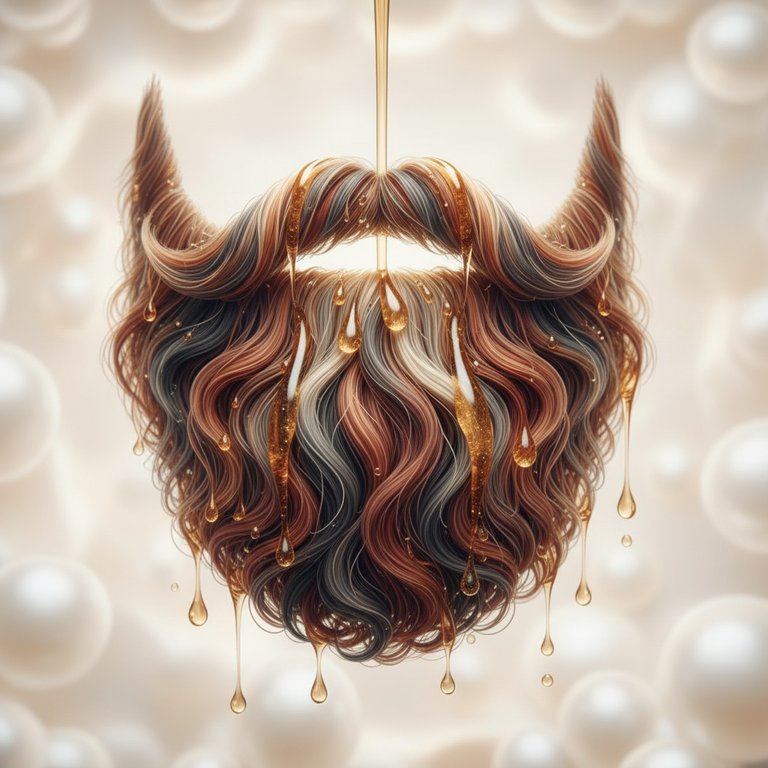Hey there, fellow beard enthusiast! So, you’ve rocked a magnificent beard for a while, maybe even years. It’s been a loyal companion, a statement piece, and probably a great conversation starter. But now? You’re contemplating a change. Perhaps the weather's getting warmer, you're looking for a fresh start, or you just want to see what's under all that glorious growth again. Whatever your reason, the thought of shaving off a long beard can be a bit daunting, right?
The biggest fear? That dreaded post-shave irritation, razor burn, or a face full of angry bumps. Trust me, I’ve been there. I once went from a full Viking beard to baby smooth in one go, and my skin definitely wasn't happy about it. But fear not, my friend! Shaving off a long beard doesn't have to be a battle with your skin. With the right approach, patience, and a few insider tips, you can achieve a super smooth transition without any of the usual fuss. Let's get you ready for that fresh-faced look!
The Big Decision: Why Are You Shaving It All Off?
Before we even touch a trimmer, take a moment. Why are you doing this? Are you sure you want to go completely bare? Sometimes, a drastic trim can feel like a whole new look without committing to the full shave. But if your mind is made up, that’s awesome! Embracing change is part of the journey. Knowing your "why" can help you stay motivated through the steps, especially when you're halfway through and suddenly miss the warmth of your beard. Remember, facial hair always grows back, so it’s never a permanent farewell!
Pre-Shave Prep: The Foundation for a Smooth Transition
This is arguably the most crucial step, especially when dealing with a significant amount of facial hair. You wouldn't paint a wall without priming it, right? Your face is no different. Proper preparation will soften your beard, protect your skin, and make the entire process much smoother.
Step 1: The Dry Trim – Taking Down the Bulk
Attempting to go straight for a razor on a long beard is like trying to cut a jungle with a butter knife – messy, frustrating, and a recipe for disaster. You need to reduce the length significantly first. Grab your electric beard trimmer or clippers. Don't worry about perfection here; we're just getting rid of the major bulk.
- Start with a longer guard: If your beard is really long, begin with a higher guard (e.g., #4 or #3) to take off the top layer. This prevents clogging your trimmer and pulling hairs.
- Work your way down: Once the initial bulk is gone, switch to a shorter guard (e.g., #2 or #1). Go against the grain of your beard growth. This will cut the hairs much shorter and more evenly.
- Clean it up: Aim for a uniform stubble length all over. You want it short enough that you can see your skin through the hair, but not so short that you're scraping your skin with the trimmer blades.
Personal Tip: Do this over a dry sink or with a towel around your neck. Beard trimmings get everywhere, and trust me, you don't want them clogging your drain!
Step 2: Hydrate and Soften
Once your beard is a short stubble, it’s time to soften the remaining hairs and prepare your skin. A warm shower is your best friend here. The steam and warm water will open up your pores and make the hair shafts more pliable.
- Warm Shower: Let the warm water run over your face for a few minutes. You can even wash your face gently with a mild facial cleanser to remove any dirt or oils.
- Pre-Shave Oil: After your shower, or even during it, apply a good quality pre-shave oil. This creates a protective barrier between your skin and the razor, helping the blade glide smoothly and reducing friction. Massage it gently into your stubble and skin.
The Final Shave: Close, Comfortable, and Calm
Now that your beard is a short stubble and your skin is prepped, it's time for the main event. Precision and patience are key here. Don't rush!
Step 3: Lather Up Like a Pro
A rich, creamy lather is essential. It lifts the hairs, provides lubrication, and helps the razor do its job efficiently.
- Shaving Cream/Soap: Use a high-quality shaving cream or soap. Apply it generously over your entire stubble, ensuring full coverage. A shaving brush can help create a thicker lather and lift the hairs more effectively.
- Let it sit: Give the lather a minute or two to really penetrate and soften the hairs. This isn't a race!
Step 4: The Shave – Gentle Strokes, Sharp Blade
This is where technique makes all the difference in preventing irritation.
- Sharp Razor is Non-Negotiable: Whether you prefer a multi-blade cartridge razor or a safety razor, make sure the blade is brand new or incredibly sharp. A dull blade is the number one cause of razor burn and irritation.
- First Pass – With the Grain: Always start by shaving with the grain of your hair growth. This is the least irritating way to remove hair. Use light, short strokes. Don’t press down hard; let the sharp blade do the work. Rinse your razor frequently under warm water to clear away hair and cream.
- Re-lather and Second Pass (Optional, Across/Against the Grain): If you want an even closer shave and your skin isn't super sensitive, re-lather your face. For the second pass, you can go across the grain (perpendicular to hair growth) or, if your skin tolerates it well, gently against the grain. Be extra careful with against-the-grain passes; use even lighter pressure and fewer strokes.
- Stretch Your Skin: Gently pull your skin taut with your free hand in areas like your neck or jawline. This creates a flatter surface for the razor and helps prevent nicks and cuts.
Personal Tip: Pay close attention to your neck. The hair growth patterns here can be tricky, often growing in different directions. Feel your stubble to determine the grain before shaving.
Post-Shave Care: Keeping Your Skin Happy
The shave isn't over until you've properly cared for your freshly exposed skin. This step is vital for calming any potential irritation and keeping your face smooth and healthy.
Step 5: Rinse and Soothe
- Cold Water Rinse: Once you've finished shaving, rinse your face thoroughly with cool or cold water. This helps close your pores and soothe your skin.
- Pat Dry: Gently pat your face dry with a clean, soft towel. Don't rub!
Step 6: Moisturize and Protect
- Aftershave Balm/Lotion: Apply a good quality, alcohol-free aftershave balm or hydrating lotion. Look for ingredients that are known for their soothing and moisturizing properties. This will help reduce redness, dryness, and discomfort.
- Hydration: Continue to moisturize your face daily, especially for the first few days after the big shave. Your skin might feel a little exposed and dry initially.
You did it! Take a moment to admire your new look. It might feel a little strange at first, but embrace the change!
FAQ: Your Burning Questions Answered!
Why does my skin get so irritated after I shave off a long beard?
When you shave off a long beard, your skin is suddenly exposed to the elements after being protected for so long. Plus, the sheer volume of hair being removed can be tough on your skin if not done correctly. Common culprits for irritation include using a dull razor, not prepping the beard enough (shaving directly on long hairs), shaving against the grain too aggressively, and neglecting post-shave care. Your skin just needs a little extra TLC during this big transition!
How long should I wait between trimming down my beard and the final shave?
Ideally, you want to go from a short stubble directly to the final shave. There’s no real need to wait. The goal of the trimming stage is to get the hair short enough for your razor to handle effectively. If you leave it for a day or two after trimming, the hairs might start to curl back into the skin, potentially increasing the risk of ingrown hairs when you finally shave. Best practice is to trim, shower, prep, and shave all in one session.
Can I just use clippers to shave it all the way down?
While clippers can get your beard very short, they typically won't give you a truly "smooth" shave like a razor can. If you're happy with a very close stubble look (often called a "five o'clock shadow"), then clippers without a guard might be sufficient. However, for a completely smooth finish, a sharp razor is essential. Using clippers directly on the skin can also be more irritating if not done carefully, as the blades aren't designed for that super close, skin-level cut.
What's the best way to prevent ingrown hairs after shaving a long beard?
Preventing ingrown hairs starts with proper preparation and shaving technique. Make sure you're thoroughly exfoliating (gently!) before you shave to remove dead skin cells. Always shave with a sharp razor and ideally with the grain for the first pass. Don't press too hard. After shaving, use a good aftershave balm, and consider a gentle facial scrub a day or two later (once your skin has calmed down) to keep follicles clear. Keeping your skin moisturized also helps.
Should I use a different kind of razor for a really long beard?
Once you've trimmed your long beard down to a short stubble, your regular, sharp razor should be perfectly fine. The key is the initial trim. Trying to use a standard razor on a full, long beard will clog it instantly and lead to frustration and irritation. So, no special razor is needed for the final shave itself, just a sharp one!
What's the deal with pre-shave oil – do I really need it?
While not strictly "essential" for everyone, pre-shave oil is highly recommended when shaving off a long beard. It creates a slick, protective layer on your skin, allowing the razor to glide more smoothly and reducing friction. This significantly minimizes the chances of razor burn, nicks, and irritation, especially when your skin is suddenly exposed and sensitive. Think of it as an extra layer of armor for your face!
My skin feels super sensitive after shaving everything off. What gives?
It's totally normal for your skin to feel a bit sensitive after shaving off a long beard. Your facial skin has been protected by a dense layer of hair, shielding it from wind, sun, and even the products you use. Suddenly, it's exposed! This can lead to a temporary feeling of sensitivity, dryness, or even slight tightness. Consistent moisturizing with a soothing, alcohol-free balm is key to helping your skin adjust and recover. Give it a few days, and it should settle down.
Conclusion
Shaving off a long beard is a big step, but it doesn't have to be an ordeal. By taking your time, preparing your skin and hair properly, using the right tools, and following up with good post-shave care, you can achieve a super smooth, irritation-free transition. Embrace your fresh look, enjoy the feeling of that newfound freedom on your face, and remember that your beard journey is always evolving!
This content is for informational purposes only and should not be considered as professional advice.



